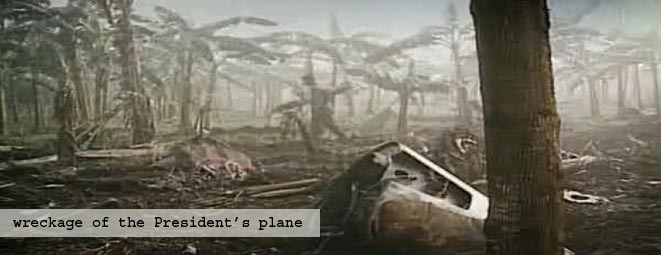Encounters with conflict and peace
Preparing for genocide
What was it like for ordinary Rwandans in the months leading up to the genocide?
As early as 1964, President Kayibanda told Tutsi refugees that if they tried to regain any political power, they “may well find that the whole Tutsi race will be wiped out.” (Erny 1994, 62-3)
So radical solutions to the “Tutsi problem” were not new. But in the months leading up to the genocide, long-standing racial prejudice became increasingly militant. Propaganda became even more fanatical - threats became more explicit…
"Two or three months before the genocide began, appalling incitements began to do the rounds... neighbouring Hutus yelled: “Tutsis, Tutsis, they must all die, absolutely!” New faces began to appear among the houses, and we could hear the interahamwe shouting encouragement to one another as they trained in the forest.”

These genocidal and extremist voices were not only tolerated - they were not prosecuted, not contradicted by government officials, not denounced by the President - but had the active moral and financial support from the highest levels of government and the military."
Trial run for genocide
For many years, crimes against the Tutsis had usually gone unpunished. “Trial runs” for genocide were tested in local areas and the perpetrators noticed the lack of consequences. Neither their own government, nor foreign countries raised any serious protest. As Jean Hatzfeld says, “It thrived in the disbelief of foreign nations.”

"One year was calm, one year was hot… we usually observed certain priorities: teachers and the owners of choice plots of land sat high on the list. One year, for example, we pushed hundreds of Tutsis alive into the bog at Urwabaynanga; another year we launched bloody raids in classrooms. We might leave a few bodies beside the road ... to show what was on our minds.
Those killings were not premeditated... but still they went unpunished. They were, in a way, groundwork for the future."
From A time for machetes. The killers speak by Jean Hatzfeld
By 1994 the de-humanisation was complete
The Tutsi in Rwanda were “socially dead”. Their murder was acceptable.
Meanwhile, other countries were putting pressure on the Hutu regime to become more democratic: to share power with other groups including the Tutsi RPF, and to organise free elections.
Privately, President Habyarimana continued to finance the interahamwe - the extremist civilian Hutu militia. But publicly he was forced to compromise and negotiate with the opposition, and this was his downfall. The extremists who had grown rich were not about to give up their privileged positions.

6th April 1994: President's jet shot down

The most likely explanation - one disputed by Hutu extremists and their French supporters - is that soldiers of the presidential guard based next to the airport fired the missiles… The government immediately blamed the RPF - and, by extension, all Tutsis - for the killing, suggesting that somehow RPF soldiers had managed to locate themselves next to the biggest army base in the country and murder the president. It was possible, of course, but highly improbable.
On the other hand the army and the extremists had every reason to be rid of him… the murder of the president would provide the perfect pretext for implementing the final solution of the Tutsi problem, as well as for the destruction of moderate Hutu opposition politicians. The army and the militias were ready with lists of their enemies; the extremist radio stations and newspapers had already created an atmosphere of anti-Tutsi hysteria.
All that remained was for the signal to be given. No sooner had Habyarimana's jet been shot down than the killings began in earnest. The one hundred days of genocide had been launched."
From Season of Blood. A Rwandan Journey
< previous page | next page >
In this section
A HISTORY OF CONFLICT
Real differences
Hutu and Tutsi
A history of conflict
THE POLITICS OF RACISM
Colonialism
A messy power shift
Refugees and scapegoating
Cheap tricks
Preparing for genocide
INSIGHTS
Pressures
In the villages
STORIES
My friend the killer

Real differences
Hutu and Tutsi
A history of conflict
THE POLITICS OF RACISM
Colonialism
A messy power shift
Refugees and scapegoating
Cheap tricks
Preparing for genocide
INSIGHTS
Pressures
In the villages
STORIES
My friend the killer


